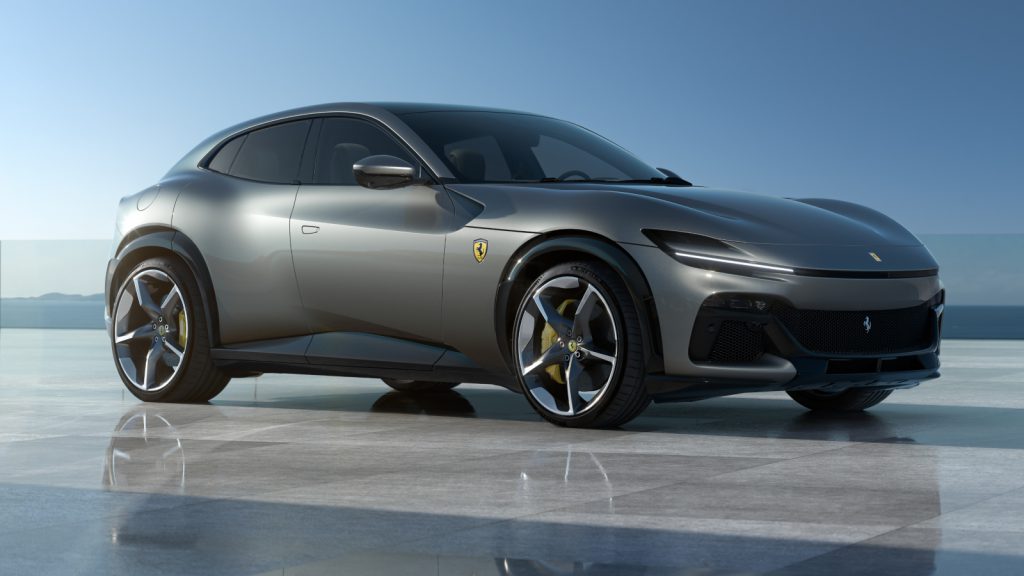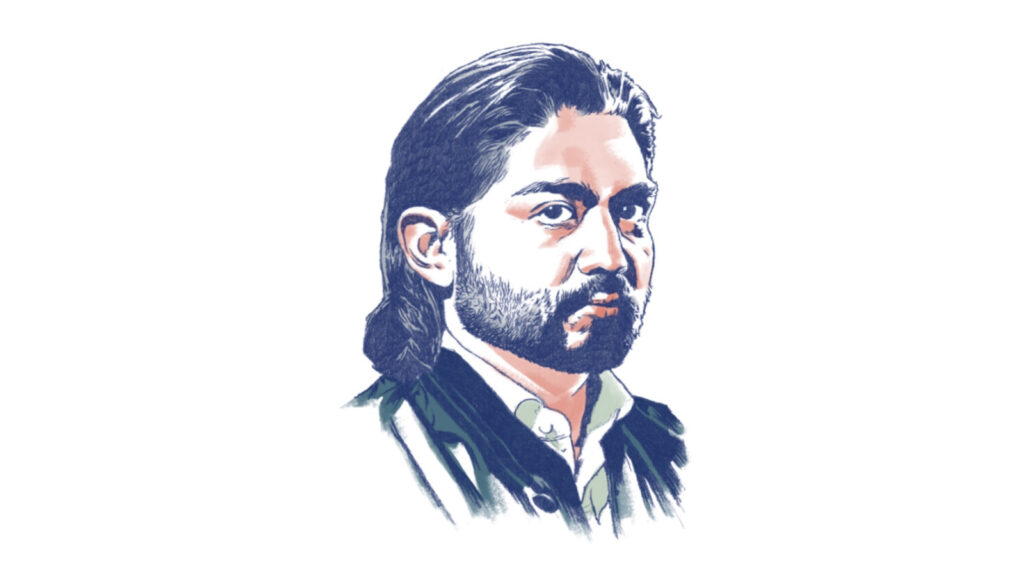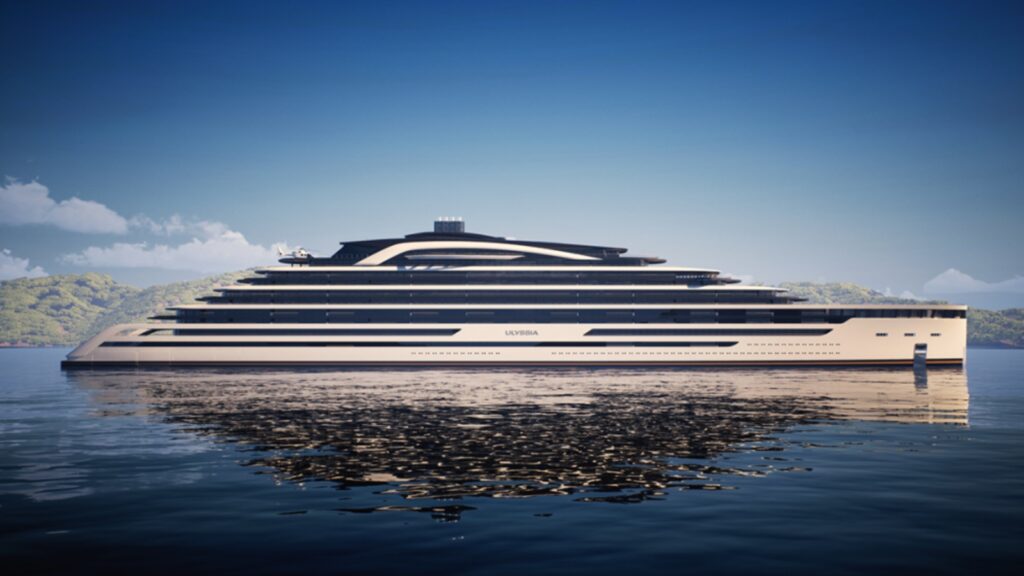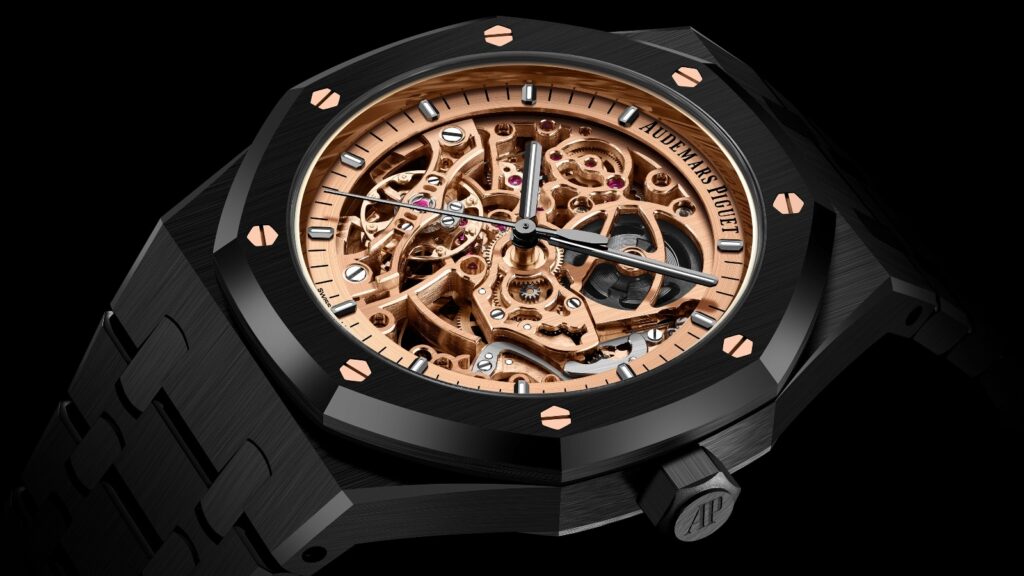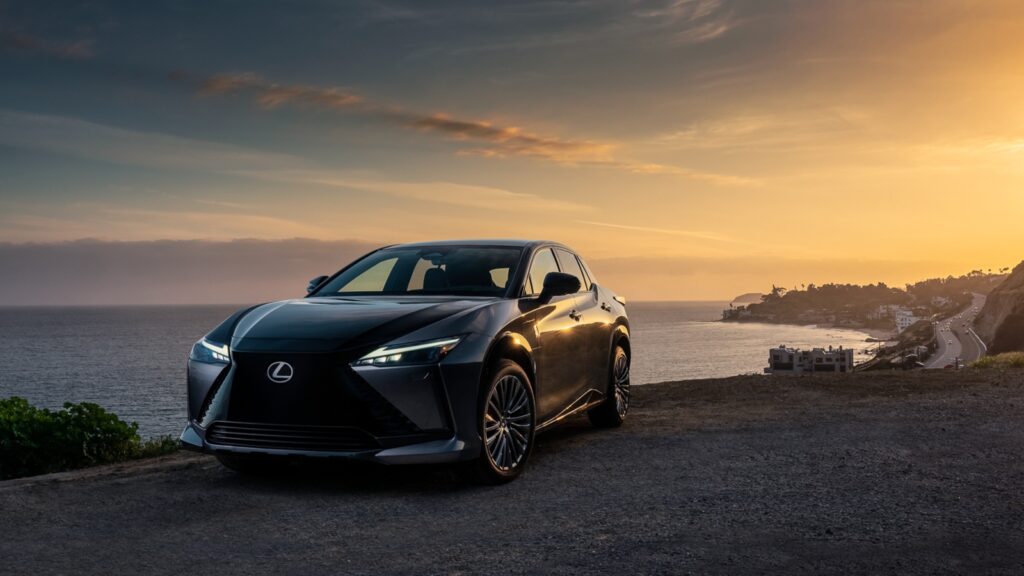Here it is. The most controversial car of 2022. After 75 glorious years, Ferrari—the marque that gifted us the 250 GTO, Daytona, F40 and 458 Speciale—has built an SUV. Yet the first Prancing Horse with four doors is described by Ferrari CEO Benedetto Vigna as “a car unlike any other.” But is that a good thing? We travelled to Ferrari’s home in Maranello, Italy, to see the new Purosangue and find out.
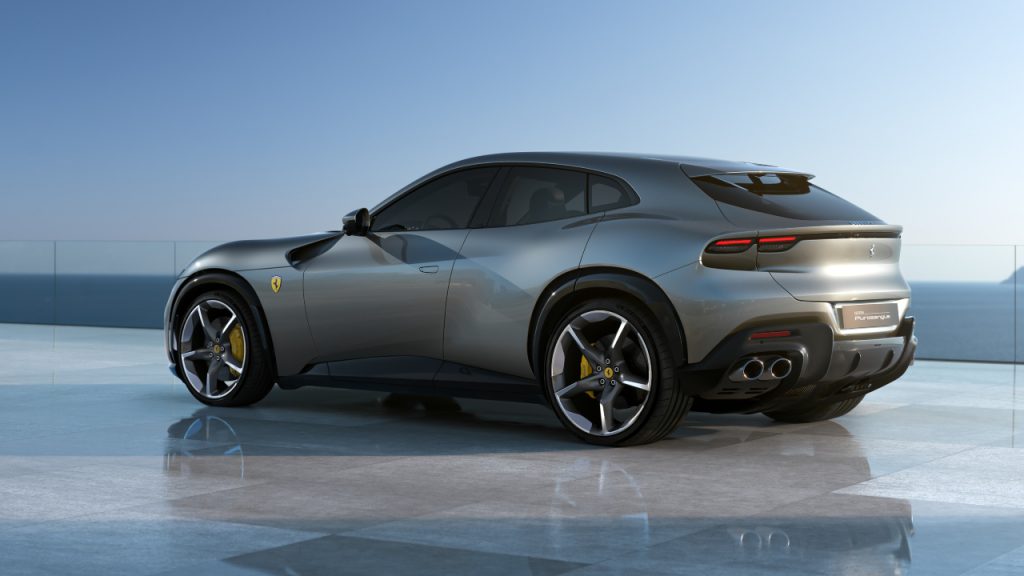
Ferrari insists that the Purosangue actually isn’t an SUV. Instead, marketing boss Enrico Galliera calls it “a sports car that can be used in different conditions.” The name “Purosangue” (“thoroughbred” in English) was “a kind of lighthouse guiding us through its development,” he says. “There has been no compromise on design or engineering.”
Whatever the semantics, Ferrari’s decision to launch the Purosangue with a naturally aspirated 6.5-litre V-12 certainly seems to affirm the lack of compromise. The all-new engine serves up 725 hp and 528 ft lbs of torque, and is tucked up beneath the bulkhead for near-perfect weight distribution of 49 percent in front and 51 percent at the rear. And unlike the peaky V-12 in the 812 Superfast, 80 per cent of that muscle arrives at an easygoing 2,100 rpm.
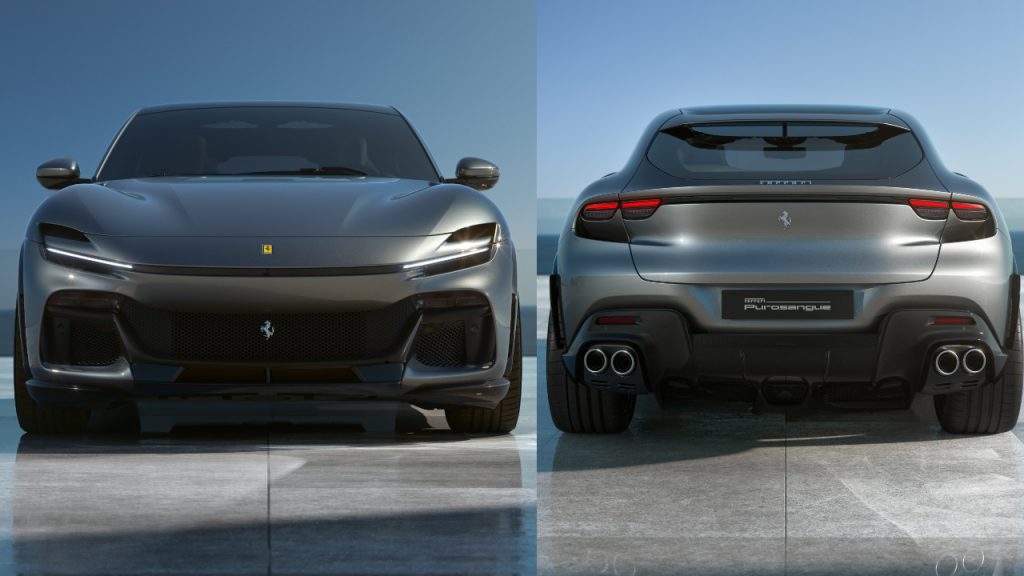
Power is delivered to all four wheels via a dual-clutch transaxle transmission, which has seven “rapid-fire” ratios and an overdrive-style eighth gear. Despite a hefty curb weight of 4,806 pounds (the lightest dry weight is 4,482 pounds), the vehicle has a power-train configuration that propels it from zero to 62 mph in 3.3 seconds and allows a top speed of 193 mph. Ferrari is coy about the model’s lap-time metrics on the marque’s Fiorano test track, but active suspension and an arsenal of chassis tech mean it certainly won’t be slow.
While every potential rival rides on air suspension, that’s not the case for the Purosangue. Stefano Varisco, head of Vehicle Dynamics, says “air springs are too slow to deliver this kind of performance.” Instead, the Ferrari Active Suspension Technology (yep, that’s “FAST” for short) was developed with Canada-based Multimatic and uses a coilover design, with 48-volt electric motors to combat pitch, dive and roll. Want to venture off-road? Surprisingly, the five-position manettino on the steering wheel doesn’t have a dedicated rough-terrain mode, but an optional lift kit allows the stock ride height of 7.3 inches to be raised by another 1.2 inches.
Flavio Manzoni, Ferrari’s design chief, readily admits that creating a new kind of Ferrari was “quite tough.” Seeing the Purosangue in the metal at Maranello’s Centro Stile, however, it’s clear his work has paid off. Flowing curves, muscular haunches and a tapering carbon-fiber roof make the model more elegant than most any other super-SUV (with the possible exception of the Aston Martin DBX). According to Manzoni, it “has the feeling of a crouching feline,” with aerodynamic aids—such as the “air-curtain” ducts around the wheel arches—seamlessly integrated into the design.
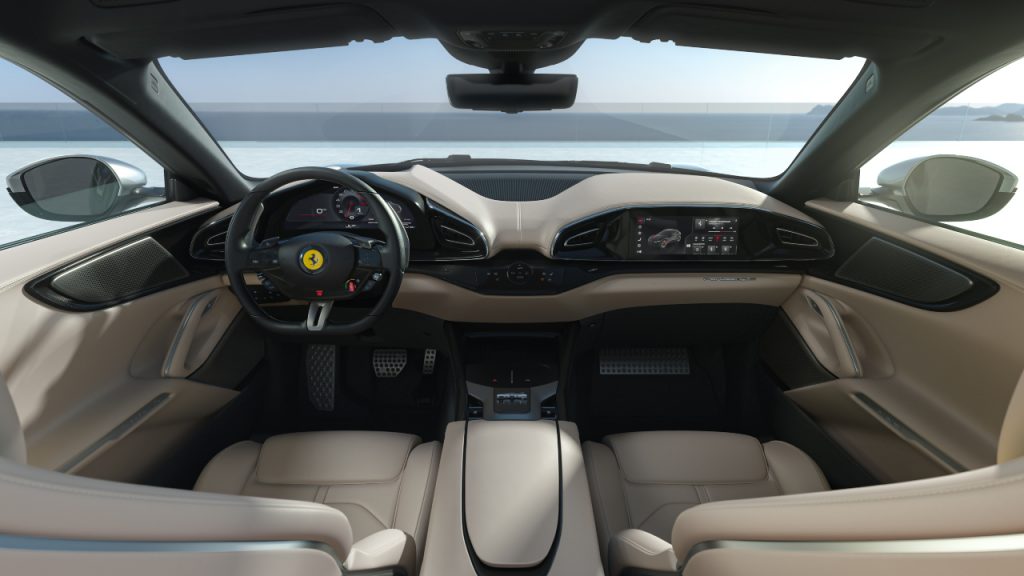
The Purosangue’s alloy wheels are the biggest ever fitted to a production Ferrari, measuring 22 inches at the front and 23 inches at the rear. Access to the cabin is via what Ferrari calls “Welcome Doors,” the rear pair hinged at the back and opened by a dainty latch that echoes the classic 308. Unlike some cars with a similar arrangement, though, the Purosangue does have a B-pillar; “We needed to retain it for body rigidity,” says Manzoni.
Inside, the Ferrari has four individually adjustable seats (there’s no five-seat option) and its trunk holds a useful 16.7 cubic feet of luggage. There’s ample space for adults in the back and the quality of materials is first rate. The car we were shown had innovative carbon-fibre trim inlaid with copper strands, plus a hard-wearing (and bulletproof) floor covering made from the ballistic fabric used for military uniforms. Very few interiors combine fashion and function so effectively.
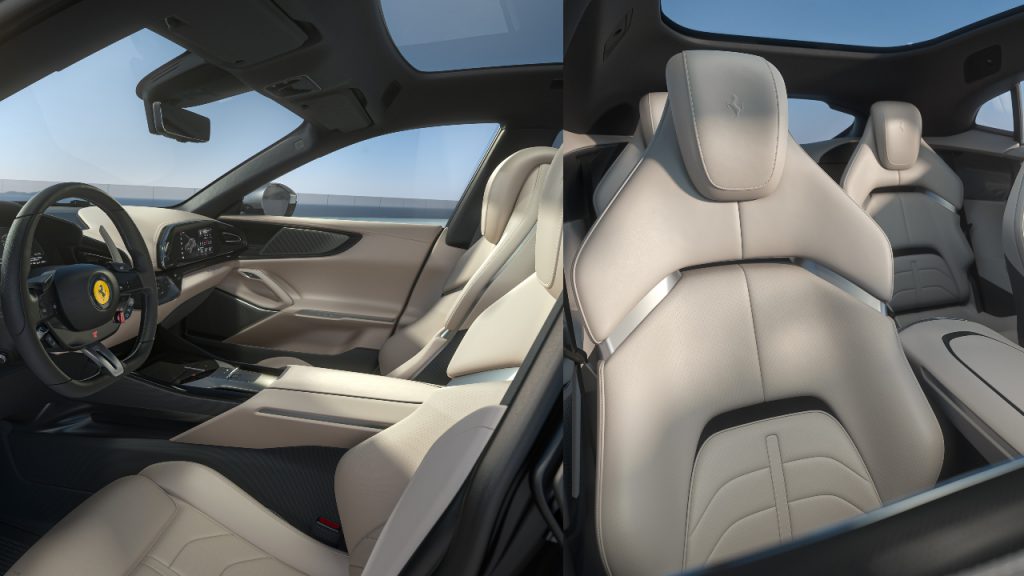
The Purosangue’s wraparound dashboard seemingly creates two individual cockpits, with several touchscreens and a pop-up rotary controller for adjusting the cabin temperature. The gear selector recalls Ferrari’s classic open-gate manual transmission and is supplemented by long paddles behind the steering wheel. There is Apple CarPlay and Android Auto connectivity, wireless phone charging and a powerful Burmester sound system. Also on board are stowage bins and all the other essentials (yes, even cupholders) for a family car, albeit a very fast one.
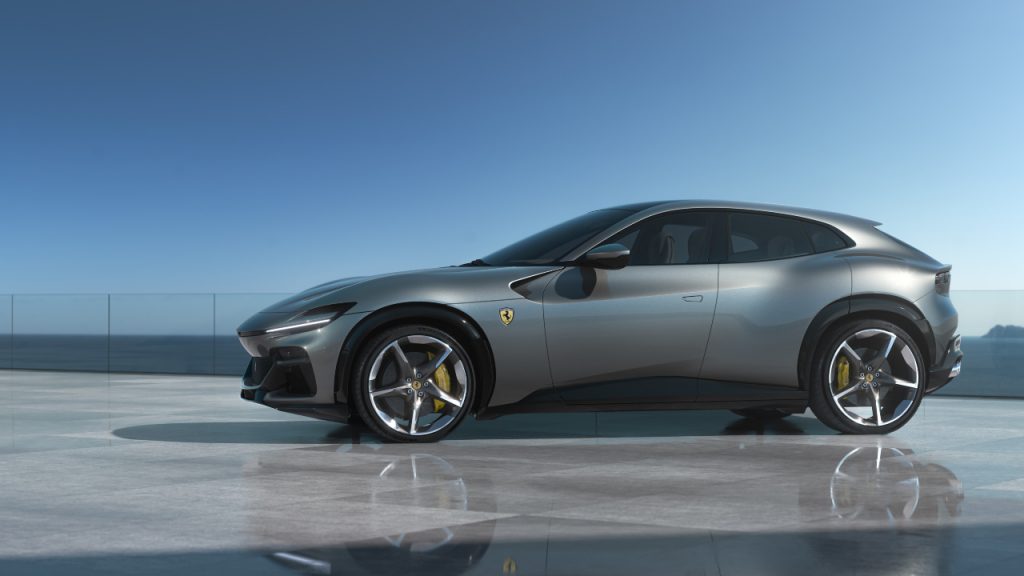
So, how will it drive? We’ll find out in a few months, but Gianmaria Fulgenzi, chief product development officer, promises “an unprecedented range of abilities,” along with instant throttle response and “never-ending acceleration” from the V-12. He also says the quad-tailpipe exhaust has been tuned for “maximum harmonics,” with a “GT soundtrack at low rpm that increases to a pure Ferrari sound.”
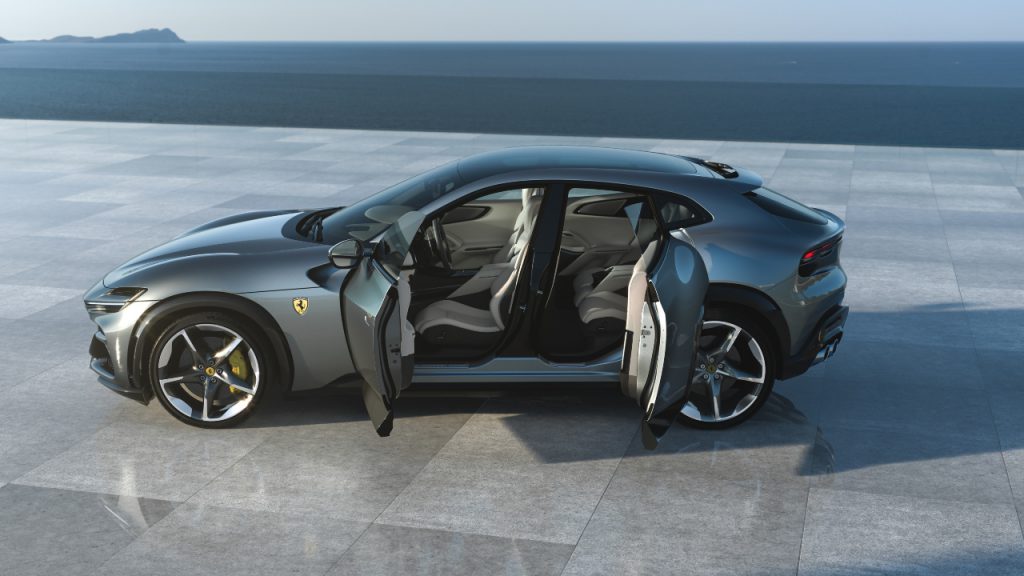
As for logistics, the first cars will reach European customers in Q2 of 2023, with US deliveries due later in the summer. The price in Italy is €390,000 (almost RM1.8 million), compared to the roughly US$225,000 starting price for Lamborghini’s Urus, but don’t expect that to dent sales. Ferrari is limiting Purosangue production to 20 per cent of its total volume, so the car will remain exclusive. If you’re not already one of the company’s loyal clients who get priority when ordering, you can expect a long wait.
Previously published on Robb Report.
